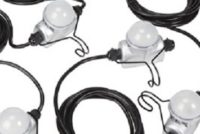5 Considerations for Your Facility’s Lighting
Light is a force that has a powerful impact on the human body. Studies have shown that dedicated applications of lighting can have an effect on all aspects of a worker’s experience, including reduction in eyestrain, illness, accidents, and even absenteeism. Here are 5 key considerations when evaluating and optimizing the lighting in your facility.




